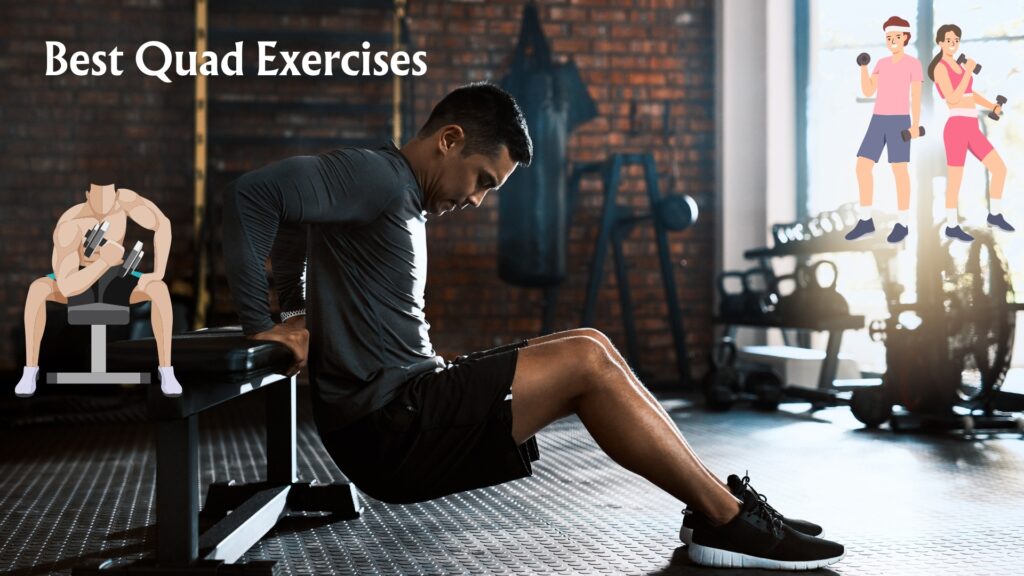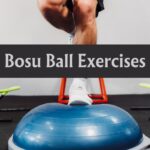When it comes to working out our lower bodies, the quadriceps are often a major focus. Strong quads are essential for everyday movements like walking, climbing stairs, and even just standing up from a seated position. That’s why incorporating the best quad exercises into your workout routine can help improve not only your strength but also your overall mobility. In this blog post, we will explore a variety of quad exercises that can be done without weights, perfect for warming up before a quad-focused leg day.
Understanding the Importance of Quad Exercises
The quadriceps are more than just an aesthetic muscle group; they are pivotal for the seamless execution of everyday activities. Situated at the forefront of the thigh, these muscles are instrumental in extending the knee, a vital motion for actions such as running, jumping, and even basic walking. Strengthening your quads can be a game-changer in reducing the risk of knee injuries, a common issue for both athletes and non-athletes alike. Moreover, a robust set of quadriceps is key to maintaining balance and stability, which can diminish with age or a sedentary lifestyle. Engaging in targeted quad exercises aids in bolstering this muscle group, thereby enhancing athletic capabilities across various sports and activities. This emphasis on quad strength is not just about enhancing performance; it’s also about safeguarding the body against falls and other mobility-related complications. Additionally, a well-rounded quad workout routine can contribute to a more efficient energy expenditure during physical activities by improving muscle coordination and reducing the overall effort required for movement. By dedicating time to fortify the quads, individuals can enjoy a higher quality of life, marked by greater ease in performing daily tasks and reduced vulnerability to leg injuries.
Preparing Your Quads for Intense Workouts
Before embarking on a rigorous leg day focusing on the quadriceps, it’s crucial to prime these muscles with preliminary exercises that mimic everyday movements. Starting with gentle, weight-free exercises such as split squats, yoga chair pose, wall squats, or lateral lunges can effectively activate the quads. These movements are not only beneficial for increasing the circulation of blood to the muscle tissues but also play a significant role in enhancing the flexibility of the muscles and joints involved. Importantly, these exercises serve to establish a stronger mind-muscle connection, which is pivotal for maximizing the efficiency of your subsequent workout. By engaging in these preparatory exercises, you’re not only warming up the muscles but also preparing your body for the demands of more intense quad-focused exercises. This preparatory step ensures that your muscles are adequately warmed up, which can significantly reduce the risk of injury and improve your overall workout performance. Engaging in this kind of thorough warm-up routine is an essential part of any effective leg day, setting the foundation for a successful and injury-free workout that targets the quads.
How to Perform Split Squats Properly
Begin a split squat by establishing a stance that is roughly hip-width apart. Progress into the exercise by stepping back with one leg, ensuring a substantial but comfortable distance between both feet. This is your starting position. Slowly lower your hips towards the floor, allowing both knees to bend simultaneously until they form 90-degree angles. The rear knee should hover just above the ground, while the front thigh comes parallel to the floor, ensuring your front knee does not extend beyond your toes. It’s crucial to maintain an upright posture throughout the movement, keeping your chest lifted and core engaged. Concentrate on driving through the heel of your front foot to ascend back to the initial position. This emphasis ensures the engagement of your quads and glutes effectively. Alternate legs after completing the desired number of repetitions on one side. To enhance focus on the quadriceps and for additional stability, you might consider lightly resting your hands on your hips or extending them out in front of you. Each repetition should be performed with controlled precision to maximize muscle engagement and to foster balance improvement. This unilateral exercise not only activates the quads but also aids in identifying and correcting muscular imbalances between legs, promoting symmetry and functional strength.
Mastering the Yoga Chair Pose for Quad Strength
To begin the Yoga Chair Pose, stand with your feet either together or hip-width apart, based on your comfort and balance. As you inhale, extend your arms upward, reaching towards the sky, keeping your arms either parallel to each other or palms touching. Exhale, bending your knees deeply, as if lowering yourself into an invisible chair behind you. Aim to bring your thighs as close to parallel with the floor as possible, challenging your quads while maintaining balance. Your weight should be distributed evenly through your feet, allowing your heels to anchor you as you sit back into the pose. Keep your back long and your spine straight, avoiding rounding forward. Instead, imagine lengthening your torso with each breath, which helps engage the core and supports the lower back. Focus on keeping your knees in line with your toes and avoid letting them splay outward. This alignment ensures that your quads are effectively engaged and working hard to maintain the pose. Holding this position, breathe deeply for several breaths, aiming to stay in the pose for 30 seconds to a minute. Over time, as your endurance and strength improve, you can gradually increase the duration of the pose. This potent exercise not only fortifies the quadriceps but also enhances flexibility in the ankles and shoulders, making it a comprehensive addition to your quad-strengthening regimen.
Wall Squats: A Simple Yet Effective Quad Exercise
To execute a wall squat effectively, position yourself with your back against a stable wall. Gradually lower your body by sliding down the wall, as if sitting back into an imaginary chair, ensuring your thighs become parallel with the floor. Your feet should be placed about shoulder-width apart, with your toes pointing slightly outward. This stance will help you maintain balance and target the quads more accurately. Once in position, aim to hold this squat for a duration ranging from 30 seconds to one minute. The key to a successful wall squat lies in the constant tension maintained in the quads throughout the hold. This not only activates the muscle fibers but also builds endurance and strength in the lower body. Keep your core engaged and your back flat against the wall to support proper posture and maximize the exercise’s effectiveness. Wall squats are uniquely beneficial as they provide a low-impact yet highly effective way to strengthen the quads without the need for any equipment, making them accessible for individuals at any fitness level.
The Benefits of Lateral Lunges for Quad Development
Lateral lunges stand out as an exceptionally versatile addition to any quad-strengthening arsenal, extending their benefits beyond the quadriceps to encompass the inner and outer thighs, and promoting an increase in hip flexibility. Initiating this movement begins by positioning oneself with legs spaced at hip width. As you step laterally, ensure a substantial but manageable distance is achieved, then bend into the working leg while the opposite leg remains straight, mirroring the motion of taking a large step to the side. It is imperative to keep the toes of both feet pointing forward, aligning the bent knee directly over the foot to prevent undue stress on the joints.
The action of pushing off from the heel to revert to the starting stance activates the quad muscles intensely, providing a robust stimulus for muscle growth and strength enhancement. This exercise not only targets the quadriceps but also implicates the gluteal muscles, contributing to a more holistic lower body workout. Moreover, lateral lunges introduce a lateral movement pattern that is often neglected in traditional lower body routines, fostering improved balance and coordination. Incorporating lateral lunges into your regimen encourages muscle symmetry and functional mobility, crucial for executing everyday tasks with ease and efficiency.
Must Read: Sculpt Your Abs: Deep Core Exercises to Try
Integrating These Exercises into Your Routine
To effectively incorporate these weight-free quad exercises into your routine, start by integrating them into your warmup to activate and prepare the muscles for more strenuous activity. Alternatively, you can structure a quad-centric workout session focusing specifically on these movements. Aim to perform each exercise with attention to form and controlled movements, ensuring maximum engagement of the quadriceps. Vary the sequence or combine them in supersets for a comprehensive lower-body workout that challenges your muscles in different ways. Gradually increase the duration and intensity of each exercise as your strength and endurance improve. Tailoring the frequency and complexity of these exercises to fit your fitness level and goals will help you achieve noticeable improvements in quad strength and function, contributing to better performance in daily activities and enhanced athletic capability. Stay mindful of your body’s feedback, adjusting as necessary to prevent overexertion and injury, allowing for sustainable progress in strengthening your quadriceps.



